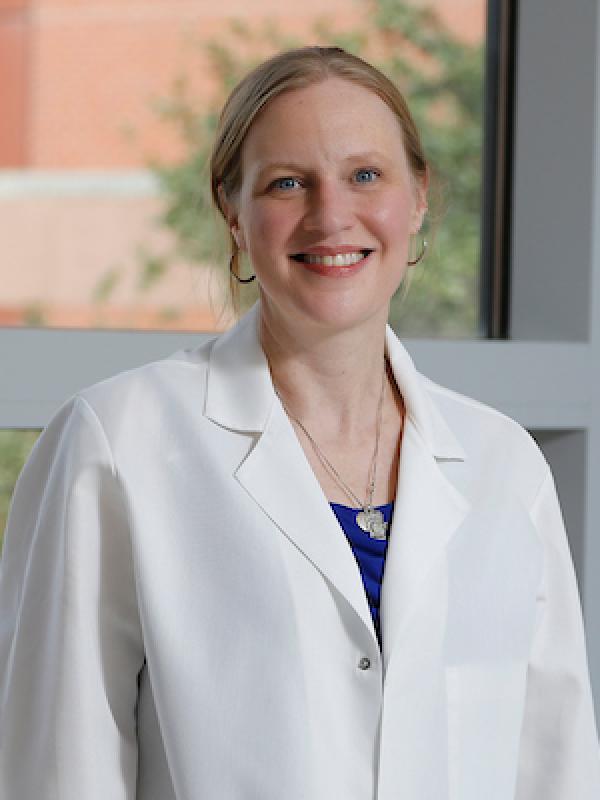Christin Burd

Contact Information
Professor
Areas of Expertise
- Melanoma
- Aging
- Genetically Engineered Mouse Models
Research Interests
Our lab is interested in the identification and dissection of genetic mechanisms involved in cancer and aging. Using molecular biology, biochemistry, cell culture, mouse models and human tissue samples we aim to promote healthy aging and aid in the prevention, detection and treatment of melanoma.
Why are certain NRAS mutants prevalent in human melanoma?
RAS mutations, present in one-third of all human cancers, are predominantly localized to codon 12, 13 or 61. Each mutation severely limits RAS GTP hydrolysis, locking the protein in an active conformation that promotes tumorigenesis. Although pharmaceutical RAS inhibitors are increasingly desirable, drugging RAS itself has proven to be a challenge. As a result, therapeutic strategies currently aim to block signaling downstream of RAS (e.g. MAPK, PI3K) rather than the GTPase activity of RAS itself. Used in combination, these drugs are showing some efficacy, however it is clear that we have yet to find the silver bullet for all RAS mutant tumors.
Recent tumor sequencing and clinical trial data challenge the traditional view that all RAS mutants are functionally equivalent. For example, 85% of melanoma-associated NRAS mutants localize to codon 61, while NRAS codon 12 mutants predominate in acute myeloid leukemia. Such observations suggest that mutation-specific RAS functions contribute to tumorigenesis and therapeutic response. Our goal is to identify and target these functions, transforming a melanoma-promoting NRAS variant into one that cannot cause skin cancer.
How are cancer and aging linked?
The risk of developing cancer increases with age; however, many mechanisms of molecular aging are also intimately related to cancer prevention. Work in the lab is focused on one example of this connection between cancer and aging: the INK4/ARF gene locus.
Although small in size (~35 kb), the INK4/ARF locus is a critically important regulator of cancer and aging. Two genes within the locus, CDKN2B and CDKN2A, encode for three distinct proteins p15INK4b, p16INK4a and ARF. All three proteins function to prevent cancer, acting through either the retinoblastoma or p53 tumor suppressor pathways. Patients with germline loss of the INK4/ARF locus are highly susceptible to cancer and many tumors silence the locus somatically via methylation, deletion or mutation. Persistent expression of p16INK4a can drive cells to enter an irreversible cell cycle state known as cellular senescence. As we age, it is believed that our bodies accumulate senescent cells, reducing our ability to regenerate tissues and promoting a wide variety of age-related diseases (e.g. diabetes, frailty). Therefore, regulation of the INK4/ARF locus must be tightly controlled to prevent cancer without promoting decline.
Ongoing studies in the lab focus on how INK4/ARF regulation changes during cancer evolution and treatment. Our goal is keep the locus in balance so that we may all live long, cancer-free lives.
What is the best way to prevent melanoma?
We know that exposure to ultraviolet (UV) light increases melanoma risk, but what is the best way to reduce this risk? Our research is using new methods to define the most dangerous, melanoma-promoting UV wavelengths. At the same time, we are testing different sunscreens to determine which formulations are the best melanoma preventatives. Ultimately, our studies aim to define specific genetic and molecular events that initiate melanoma such that new preventative strategies can be developed.
